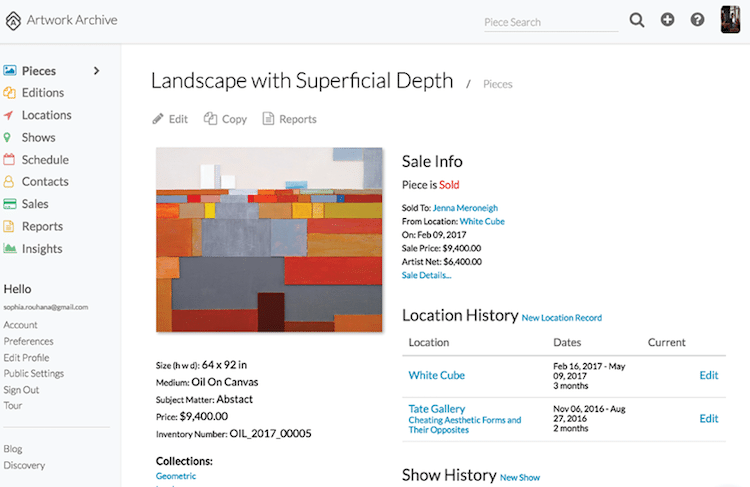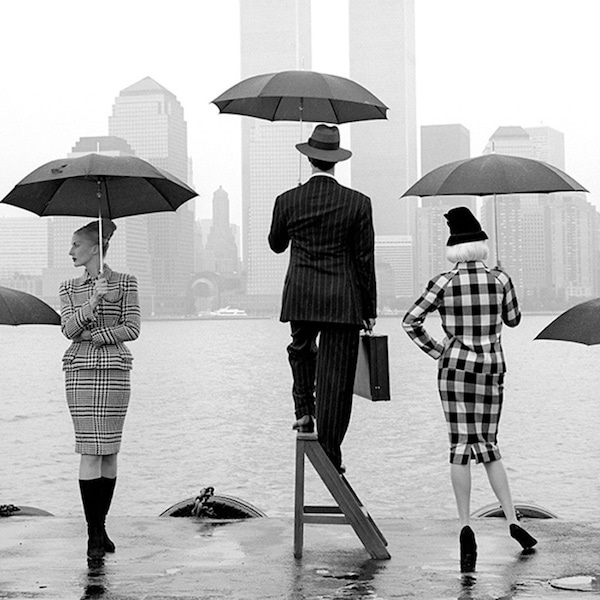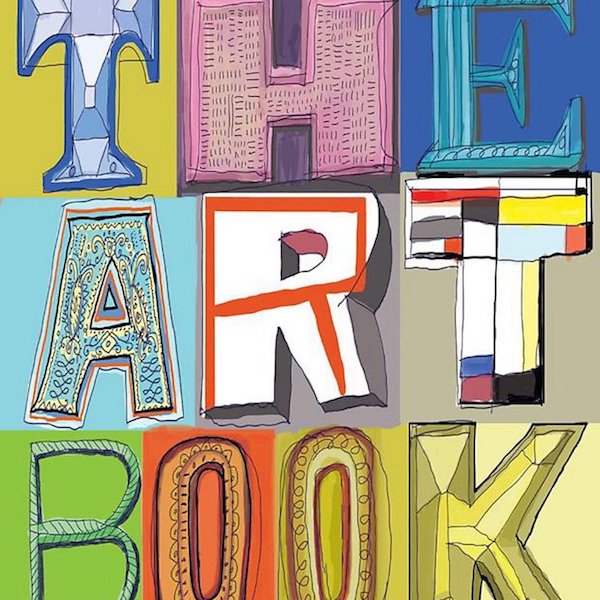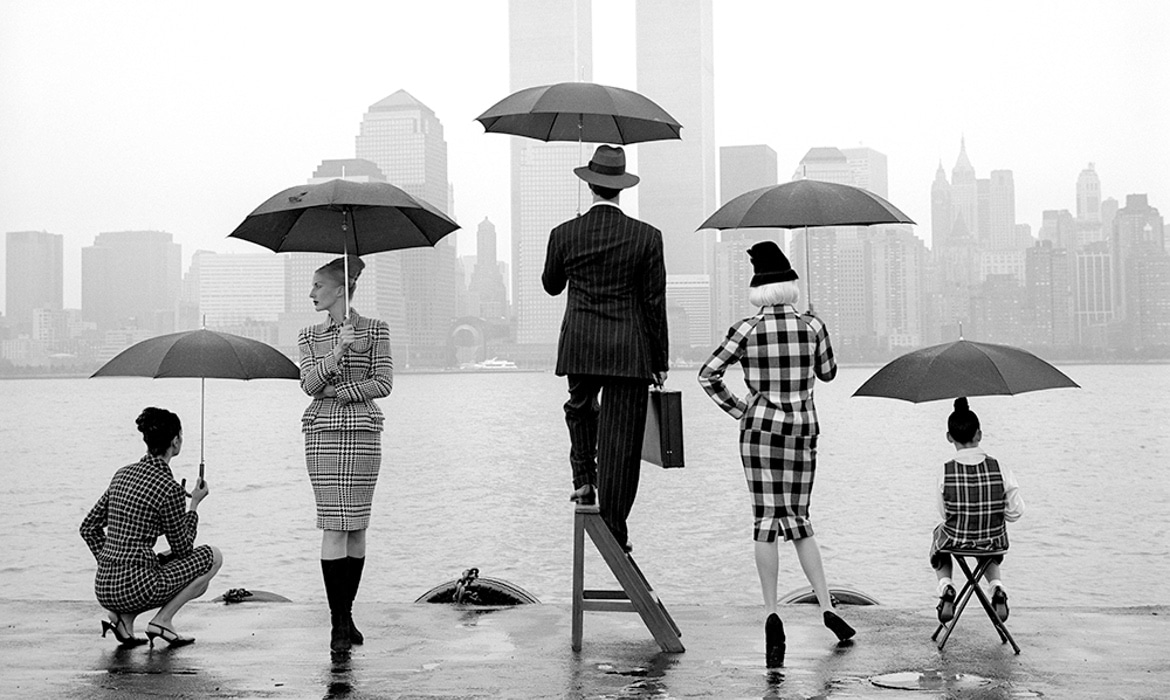Who doesn't wish they were more organized? And when you run your own business, it's even more critical that you keep your work streamlined so you can focus on important things—like creating art. While the vision of a chaotic artist studio might be romantic in its own way, the reality is that most of us work better when things are in order.
With so many things to think about, from organizing your equipment and supplies to keeping receipts in order, it can be tricky to know where to start. Luckily, we've got the business and creative side covered so that you'll know exactly where your artwork is just as quickly as you can find a paint color.

Photo: Katya Austin
Tips for Organizing Your Art Studio
Whether you are crafting, painting, sculpting, sewing, or shooting photos, a clutter-free workspace can keep your mind focused on what you have to do, instead of where things are. And it doesn't always take a big investment to keep your supplies in order. Here are ideas of how to keep your studio neat and tidy, from easy DIY fixes to comprehensive organizational systems.
Label Everything
Fire up a good label maker and get to work. This way, when everything is stored away, you'll quickly be able to see what's in each drawer, jar, and cubby you have in the studio. You might also consider a color coding system to help you separate materials by brand in order to give yourself quick access to exactly what you need at all times.
Create Defined Areas
Even the smallest spaces can be sectioned off into distinct zones. Photographers may divide up certain sections for lighting equipment, backdrops, and lenses, for instance. Or think about separate areas for packaging artwork, materials storage, and the creation of new work. By defining your space it will be easier to remember where singular items go, and where you can find them again when you need them.
Get Innovative to Store Materials
There are plenty of storage hacks that work quite well for artists and make the most of all the space you have available. Baby food jars can hold everything from extra paint to tiny beads for crafting. A hanging shoe rack opens up storage space on the back of any door and you can place items like rolled canvases or fabric scraps inside easily. Simple wooden dowels from the craft store can be mounted with clips and hooks to hold spools of tape, scissors, and inspirational images. Get a little crafty and you'll find all types of DIY projects that can expand your storage. You can also try scouring flea markets for old filing cabinets and vintage office furniture with cubbies for all your materials.
Plan “Spring Cleaning”
At least twice a year, plan a deep cleaning of your studio. This means getting rid of dried out paint and old brushes, reorganizing materials that have been scattered about, and putting things back in their place. By focusing on getting out the old and unwanted a few times a year, you'll not only make room for new materials but perhaps rediscover interesting items you'd forgotten about.
Invest in an Organizational System
If you're really looking into upping your organizational game, invest in a high-end system to increase your storage potential. The Original Scrapbox makes different systems that can be customized for creatives working with crafts, sewing, and fine art projects. The best thing is that their storage unit can fold away and become an attractive piece of furniture, allowing you to work at home or in the studio. If you're just interested in accessories, Organize More makes a variety of paint and ink storage inserts, some of which were created to slip into basic IKEA furniture.

Photo: Undrey via Shutterstock
Tips for Organizing Your Creative Business
Now that you have all of your supplies in order, it's time to turn to the business end of things. Artists can often overlook the fundamentals of organizing their business, which can make for time lost down the line. And we're not just talking about accounting. Everything from knowing who bought your artwork to easy access to high-quality photographs will help keep your studio running smoothly.

Photo: Artwork Archive
Create an Inventory
It's essential that you keep track of all the artwork you create, where it is at any given time, and who purchased it. As your career moves forward, you may have works of art in different galleries at the same time. Staying on top of where your pieces are—and when they should come back if not sold—is critical. Otherwise, you risk losing artwork. Knowing who purchased your artwork will also allow you to manage your clients and cultivate relationships with the right people. And, who knows, in the future if an exhibition calls for a certain piece that was sold, you may need to reach out to see if the collector is willing to loan the piece back for the show. The Artwork Archive makes it easy to get started with your inventory, even integrating invoicing, exhibition tracking, and provenance management. And since it's backed up in a cloud, you can access your inventory anywhere.
Keep an Updated Photo Archive
This isn't just for photographers—a photo archive is essential for any serious artist. Each piece you create needs to be photographed in high-resolution, with the image added to your inventory and photo archive. These images will be useful for gallerists, potential collectors, and media. Just imagine a journalist asking for a photo of a work you've since sold. If you don't have an image on file, you will (at the very least) lose precious time asking the collector to send an image, and in the worst case, you won't be able to track down the photo at all.
Organize Press Clippings
Similarly, you'll want to keep track of the press you receive. From mentions in 2online articles to interviews in newspapers or citations in books, a good record of your media mentions is critical. When applying for grants, residencies, and artist prizes you may be asked to provide a bibliography—often with scans included. And as your career grows, you may also find students reaching out to you as part of their research. Having a comprehensive archive of your own career and how it's been reflected in the media will ensure that the proper information about your work is out there. Set up Google alerts to help you track your online mentions and be sure to ask journalists and book authors to send scans or hard copies of any published materials.

Photo: Andrey_Popov via Shutterstock
Update Media List
Investing in a good system for contact management will help you make sure you are getting information about your upcoming events to the right people. Many people use newsletter providers like MailChimp to organize contacts into different groups—separating your collectors and fans from media leads. Be diligent about inputting contacts as they come your way, including business cards you may receive. In general, setting aside a little time every few weeks to input new information means that you'll always be up to date when you're ready to send out your next news blast.
Keep Your Receipts in Order
No one likes to think about taxes, but your life will be made much easier if you keep your receipts in order. Color-coded expandable folders can help you break things down into categories or invest in a service like Shoeboxed, which helps you track receipts and create expense reports easily. You can even auto import receipts directly from Gmail, making tax time much less of a headache.
So what are you waiting for? Start organizing your career today so you can spend more time being creative, and less time trying to figure out where everything is.
Related Articles:
How to Keep a Brilliant Bullet Journal to Creatively Track Your Life
6 Artists Share Career Advice They’d Give Their Younger Selves
20 Books Every Artist Needs on Their Bookshelf






















































































